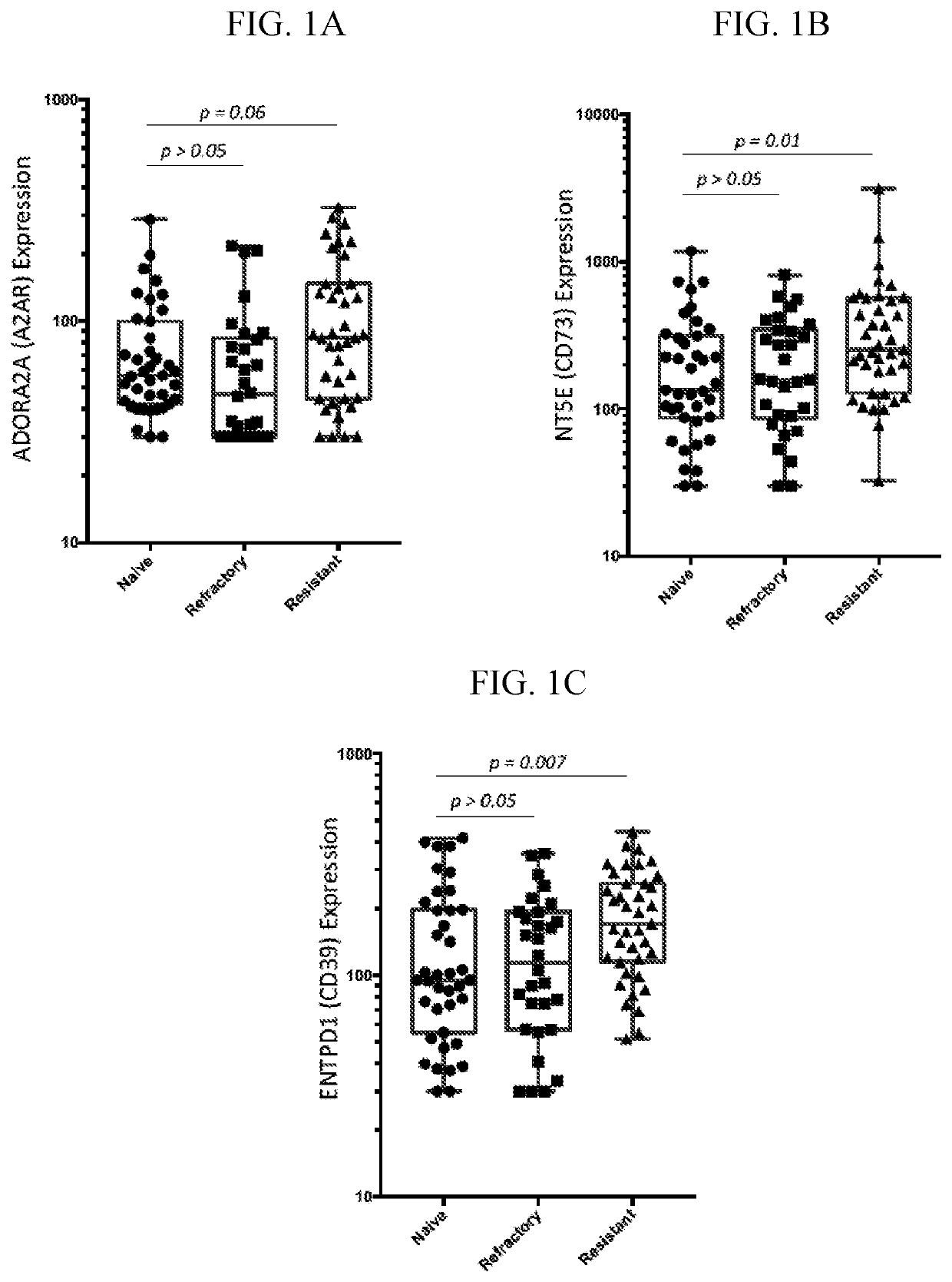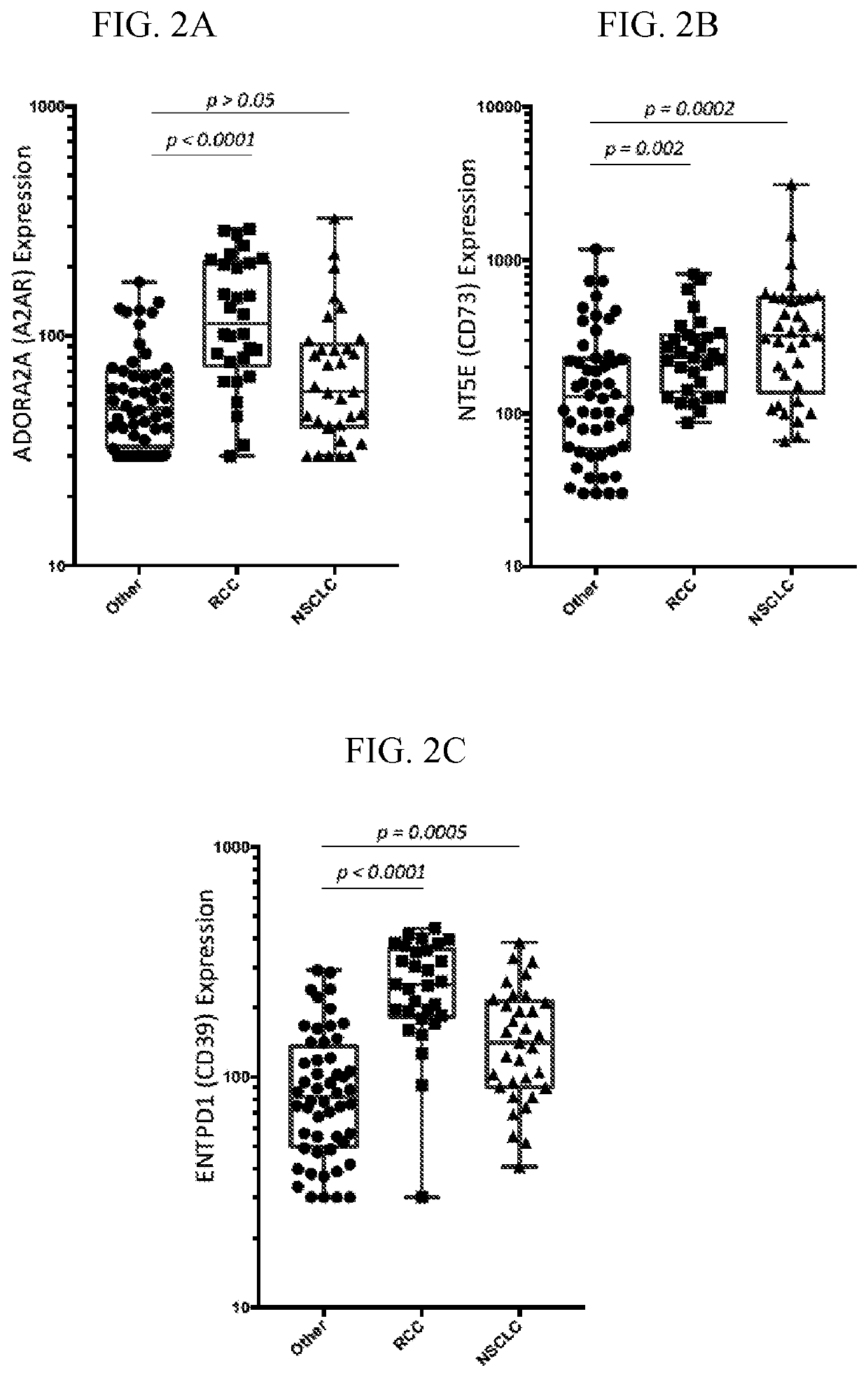Combination therapy for cancer treatment
a cancer and therapy technology, applied in the field of cancer treatment, can solve the problems of enhancing tumor growth, inefficient presentation of tumor antigens to the adaptive system, etc., and achieve the effects of increasing the level of adenosine a2a receptors, cd73, and pd-l1
- Summary
- Abstract
- Description
- Claims
- Application Information
AI Technical Summary
Benefits of technology
Problems solved by technology
Method used
Image
Examples
embodiments
Embodiment 1
[0299]A method of treating cancer in a subject in need thereof, the method comprising administering a therapeutically effective amount of an adenosine pathway inhibitor and a PD-1 pathway inhibitor to the subject to treat the cancer; wherein the subject has an elevated level of adenosine A2A receptors when compared to a control.
embodiment 2
[0300]A method of treating cancer in a subject in need thereof, the method comprising administering a therapeutically effective amount of an adenosine pathway inhibitor and a PD-1 pathway inhibitor to the subject to treat the cancer; wherein the subject has: (i) an elevated level of adenosine A2A receptors when compared to a control; and (ii) an elevated level of CD73 when compared to a control.
embodiment 3
[0301]A method of treating cancer in a subject in need thereof, the method comprising administering a therapeutically effective amount of an adenosine pathway inhibitor and a PD-1 pathway inhibitor to the subject to treat the cancer; wherein the subject has: (i) an elevated level of adenosine A2A receptors when compared to a control; (ii) an elevated level of CD73 when compared to a control; and (iii) an elevated level of PD-L1 when compared to a control.
PUM
| Property | Measurement | Unit |
|---|---|---|
| time | aaaaa | aaaaa |
| time | aaaaa | aaaaa |
| time | aaaaa | aaaaa |
Abstract
Description
Claims
Application Information
 Login to View More
Login to View More - R&D
- Intellectual Property
- Life Sciences
- Materials
- Tech Scout
- Unparalleled Data Quality
- Higher Quality Content
- 60% Fewer Hallucinations
Browse by: Latest US Patents, China's latest patents, Technical Efficacy Thesaurus, Application Domain, Technology Topic, Popular Technical Reports.
© 2025 PatSnap. All rights reserved.Legal|Privacy policy|Modern Slavery Act Transparency Statement|Sitemap|About US| Contact US: help@patsnap.com



